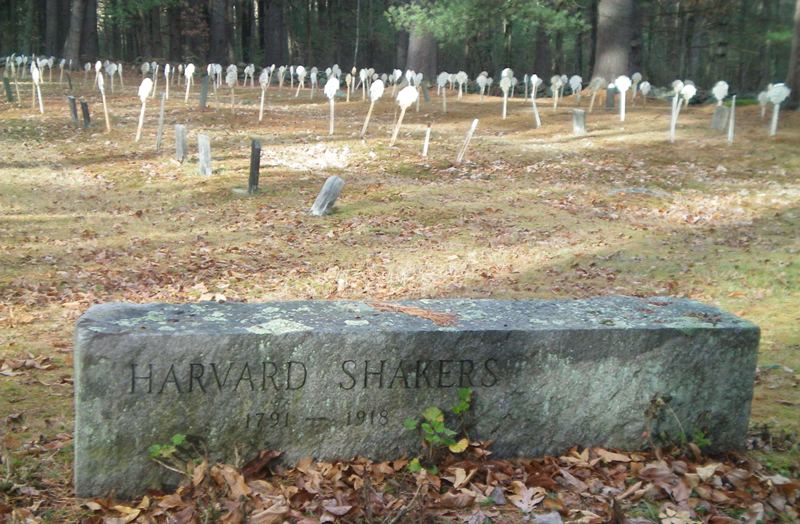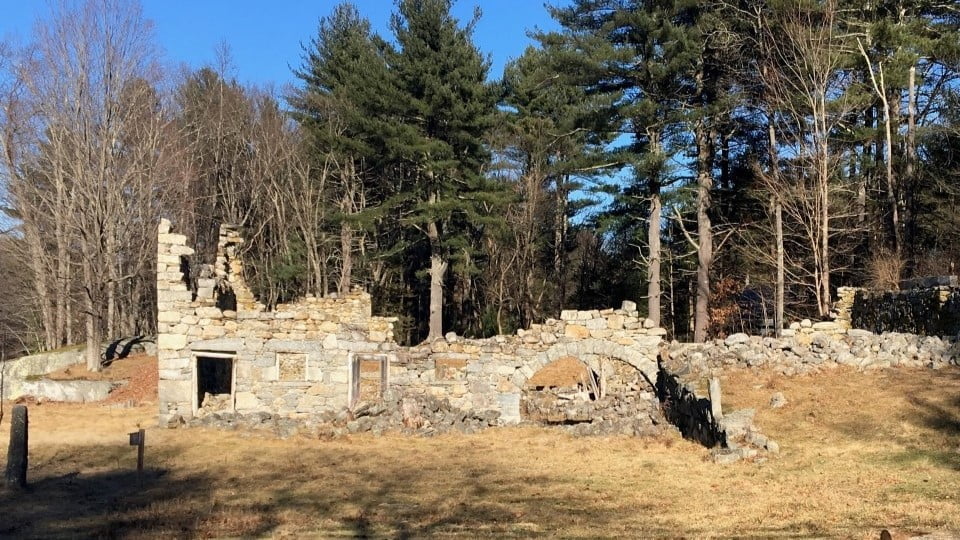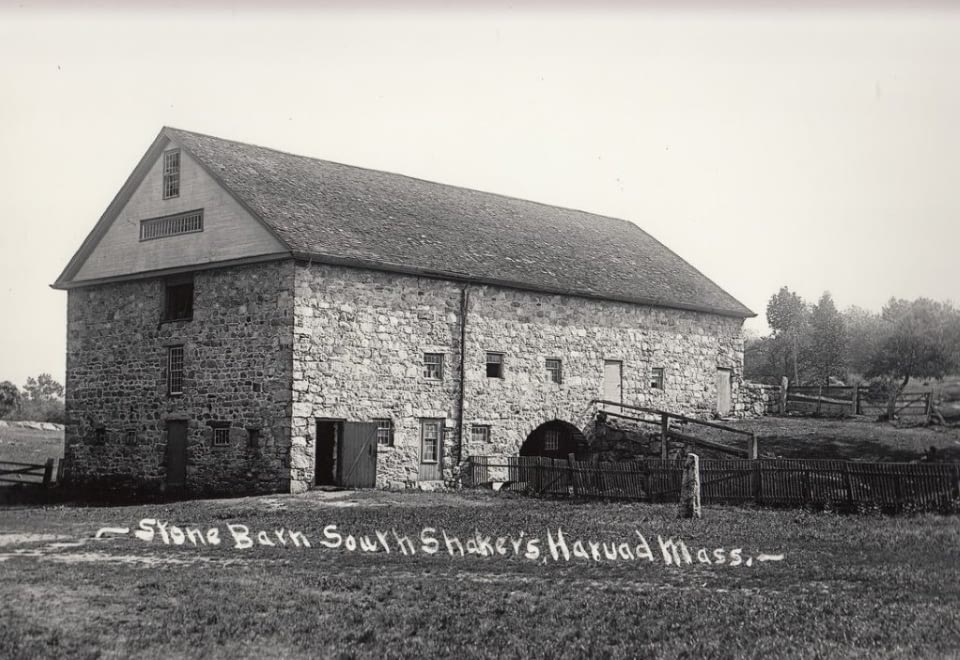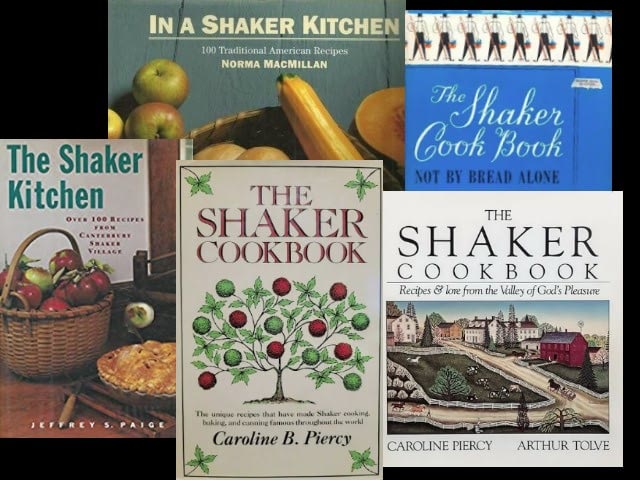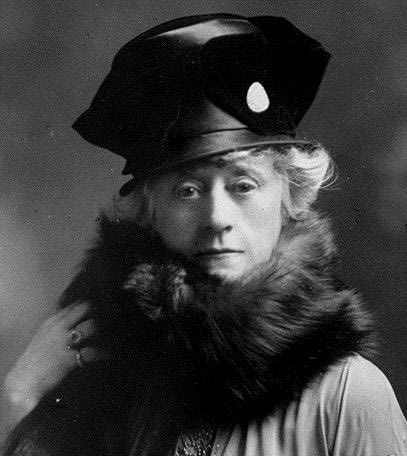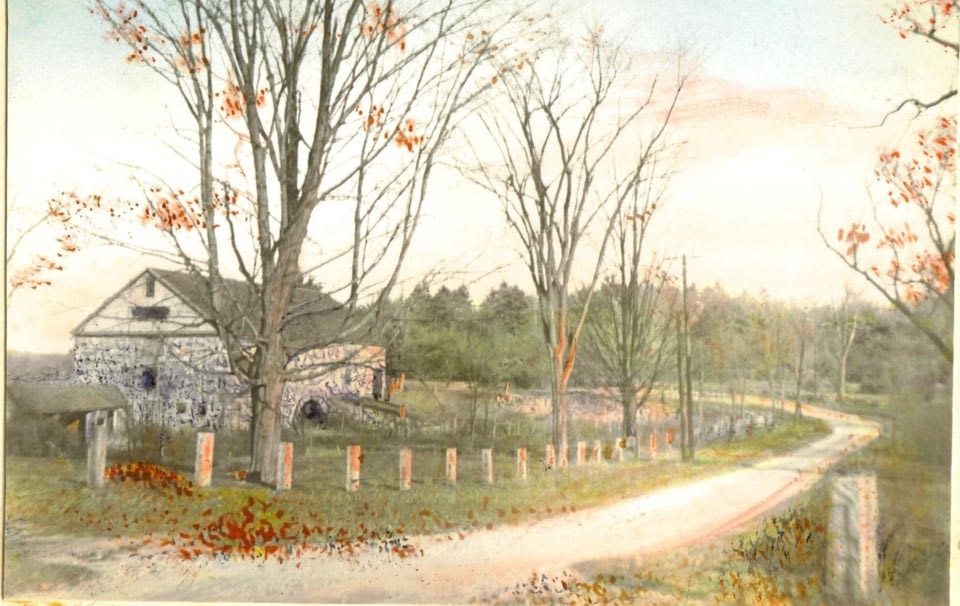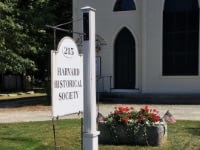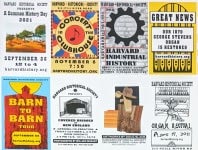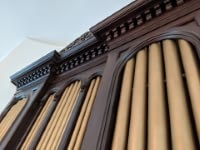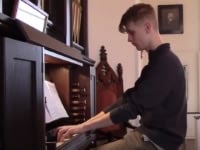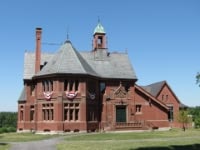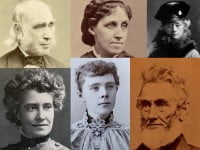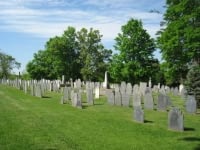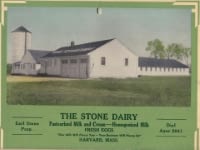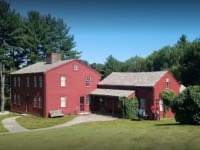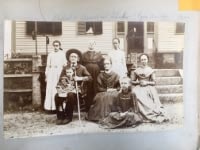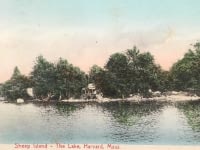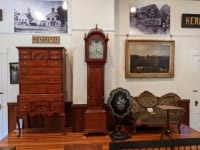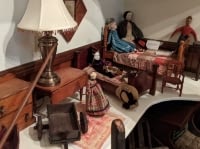Shaker Cemetery
History, burial map and Shaker biographyOrigins of the Shaker Cemetery
In 1792, after the Meetinghouse was constructed, the Shakers began building their cemetery. Jeremiah Willard sold an acre of land, on what is now South Shaker Road, to the Harvard community for $13.12. To erect a stone wall around the land, the Harvard brethren labored for eight days, assisted by four yoke of oxen. They completed the task in early November 1799.
At least 331 Shakers were buried here between 1792 and 1929. In the 1850s, the village population peaked at about 200 members and its landholdings totaled more than 2,000 acres. In the Civil War era, many of the members left, and the population plummeted to under 40 by 1890.
In 1879 the Harvard Shakers began replacing individual stone markers with cast-iron lollipop-shaped markers. The distinctive shape of the over 300 cast-iron grave markers led to its being called the Lollipop Cemetery. This is the only Shaker cemetery where the iron markers exist. In 1945 the Shakers deeded the cemetery to the town of Harvard, which currently provides upkeep. The stone marker saying “Harvard Shakers” was added by the town.
“A year ago to day the burying ground was burnt over, this last fall it was grown up & look worst then ever & it was mowed over and brush piled up. What next?”
1879 Shaker journal entry
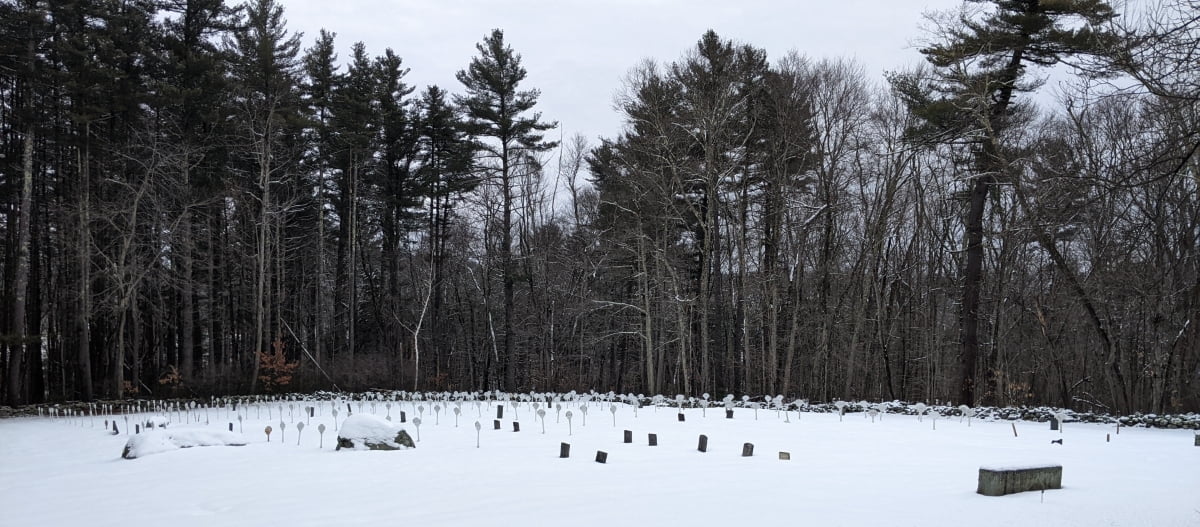
From the Shakers Manuscripts
As an introduction to the following list of names and places of interment, I amend some statements concerning the laying out, fencing, and preparing the ground in which has been deposited the remains of nearly all who have deceased in this Society (Harvard) since the gathering of the Church. As this statement is a fair specimen of the written transactions of the first Believers, and shows plainly with what minuteness, accuracy and precision they kept their accounts, I think it worthy of notice and imitation. Here it is as taken from the record October 28, 1799. The Church and Society by mutual agreement began to fence the burying ground with stone wall. The brick [sic] was done by the following persons, the number of days are placed against each name.
(Aaron Jewett, 8; Hosea Edson, 1; Seth Babbit, 2; Oliver Burt, Jr., 6-1/2; Cabel Crouch, 6-1/2; Abiather Eddy, 4; Henry Godding, 8; Ezra Lathe, 8; Aron Williams, 2-1/2; Levi Warner, 6-1/2; Jonathan Crouch, 2-1/2; Ebenezar Lyon, 4; Isaac Cooper, 1-1/2; EIijah Warner, 8; Samuel Cooper, 1-1/2; David Dwinnel, 8; Solomon Cooper, 6; Jonathan Bridges, 6-1/2; Joseph Frost, 2; Abel Jewett Jr., 3; Jeremiah Willard, 3-1/2; Barzebial Edson, 7; Solomon Frizzel, 4; Aaron Jewett, Jr., 1-1/2; Simon cooper, 7; Total, 121-1/2)

